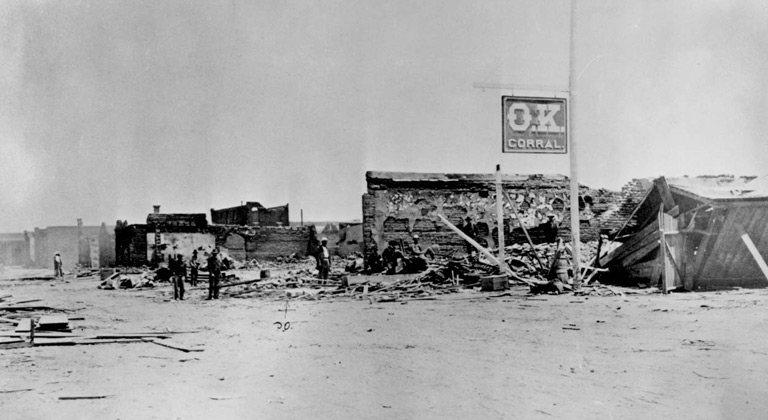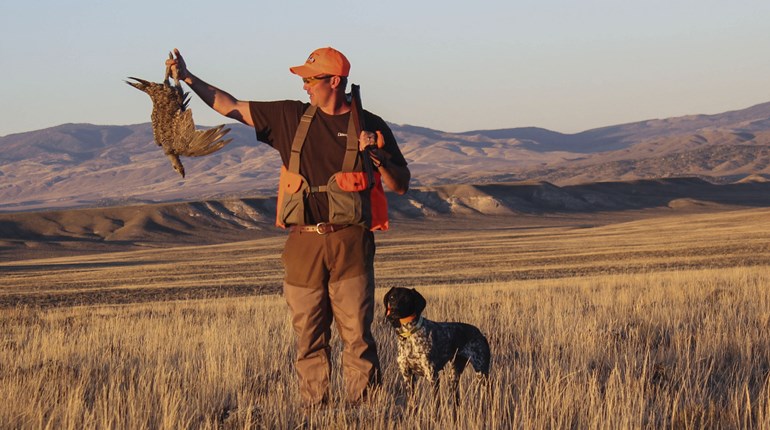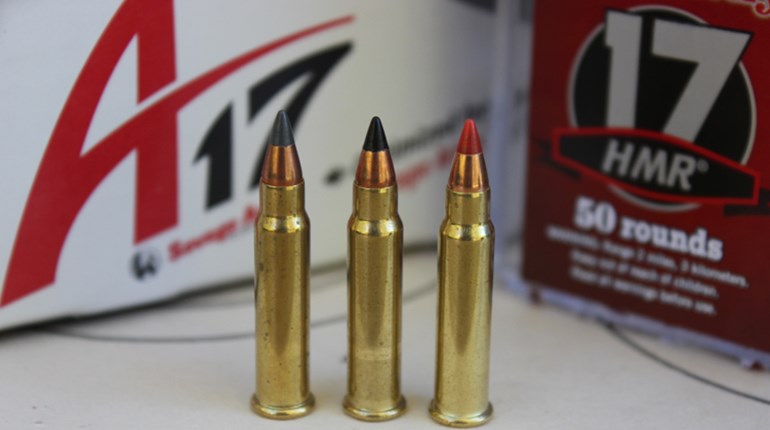
If you’re a fan of the 1993 western film Tombstone, then you already know Peter Sherayko. You may not know that you know him, though; he played Texas Jack Vermillion in the film, riding alongside Wyatt Earp and Doc Holliday on Earp’s Vendetta Ride to wipe out Curley Bill Brocious’ vicious Cowboy gang. But Sharayko’s role in that movie extended far beyond his portrayal of Jack Vermillion.
Twenty-five years ago screenwriter Kevin Jarre—best known for his work on the film Glory—contacted Peter Sherayko to discuss a screenplay he was working on. The project was ambitious, a look at the life of one of the West’s most legendary figures, and Kevin Jarre knew that Sherayko would be the only man to help him bring that screenplay to life. Jarre was not only a successful screenwriter but also a historian, so he demanded the highest level of accuracy in the film. Sherayko owns Caravan West Productions and, like Jarre, is a stickler for accuracy in Western movies. His collection of over 1,300 rifles and pistols and 650 gun belts has been used in a number of films and television shows, and Sherayko has a library of 5,000 books on Western culture that allow him to find just the right saddle, firearm and costume for any film. Peter was later hired to serve not only as an actor but lead buckaroo on the movie Tombstone, and he hired Thell Reed to serve as chief armorer on the film.
In the earliest stages of production Jarre and Sherayko went back and forth on several of the minor details of the film. Jarre would write pages of script and send them to Sherayko who, in turn, worked to add dimension to the characters of Doc Holliday, Wyatt Earp, Curley Bill and Johnny Ringo, imagining what they would wear, what they would shoot, what they would ride.
Wyatt’s revolver was simple. Even viewers who aren’t interested in the finer points of Western history are familiar with the legend of Earp’s Peacemaker revolver, reportedly given to him by Ned Buntline during Earp’s Dodge City days. But what may be less widely known is the story of the shotgun that Earp carried at the O.K. Corral—and the lengths Sherayko had to go to in order to find an exact replica to meet Kevin Jarre’s cinematic demands.
Wyatt Earp carried a Stevens 10-gauge hammer double when he killed Curly Bill Brocius in 1882, a shotgun he borrowed from Fred Dodge of the Wells Fargo Stage Company in Tombstone. For most filmmakers the gun that Kurt Russell carried in the 1993 movie could have been any double gun with hammers. But Jarre and Sherayko weren’t satisfied with putting the wrong gun in the film, and that meant Sherayko was charged with finding the exact double gun Earp carried. This would prove to be an issue. Stevens 10-gauge doubles are rare—so rare, in fact, that with all his connections and even with his vast personal collection of Western guns Sherayko was not certain he would ever be able to lay his hands on that particular weapon.
That year Sherayko happened to be attending the Great Western Gun Show when, at the end of a long aisle, he saw the profile of the exact shotgun he’d been working so hard to find, a Stevens 10-gauge tri-trigger. The only problem was that an older gentleman was holding the gun, looking over the broken stock and worn bluing from years of hard use.
“A hundred and seventy-five,” the seller said. Sherayko cringed. The gentleman who was holding the gun shook his head, and the seller dropped to $150. Still no sale. When the seller dropped his price to a hundred and twenty-five bucks, Sherayko stood in the background waiting.
“I’ll have to think about it,” the older gentleman said and laid the gun back on the table. Sherayko didn’t hesitate at that point, and offered up the requested payment for the Stevens. Armorer Larry Zeug later fashioned a new set of springs, and Fajen Gun Stocks provided three new stocks for the gun. That is the shotgun that appears in the film.
The choice of guns in the film was always the subject of great debate for Jarre and Sherayko. Sheriff Behan, portrayed in the film by Jon Tenney, was a corrupt lawman in real life who used the outlaw Cowboys to strong-arm the citizens of Tombstone in the 1880s. Sheriff Behan was known to be a dapper man, always well-dressed and stylish. Since the Colt Sheriff’s Model revolver had come out just prior to the shootout in Tombstone, Sherayko felt that Behan should carry that gun—he felt a brand-new model would have grabbed the attention of the self-absorbed Behan.
Jarre disagreed, saying that the character should carry a dainty top-break Smith &Wesson. The battle over that detail—a seemingly minor facet of the film’s overall production—continued until Sherayko received word that the pistol that Sheriff Behan carried during his time in Tombstone—a 4-inch Colt Sheriff’s Model, just as Sherayko imagined—was up for auction. So that’s the gun that Jon Tenney carried in the film.
While most of the guns in the film perfectly match the firearms that the portrayed characters carried in real life there are a couple notable exceptions, and those changes were made for very specific reasons. Doc Holliday, for instance, carried a 7 ½-inch Colt when he lived in Tombstone in the 1880s. In the film, though, Val Kilmer carries a pair of nickel-plated, ivory-handled 4¾-inch guns (an 1877 Colt Lightning and a Colt Single Action Army) which allowed Kilmer to show off his gun handling skills. It’s also important to note that Johnny Ringo, played by Michael Biehn in the film, carries the exact same style of gun (Ringo, like Holliday, carried a 7½-inch gun in real life). Having Ringo and Holliday carry the same style of gun was critical for Jarre, who wanted the audience to know that the two men were fighting with the exact same firearm. It was an effort to show that, in the end, it would not be the gun that they carried but the skill of the shooter that allowed Holliday to come out on top during their famous showdown.
For their part, both Biehn and Kilmer worked continuously with their firearms to develop a level of skill that would add authenticity to the picture. Sherayko coached both men on how to handle their guns; Biehn spent seven months prior to the filming working with his Colt revolver almost every day. In Hollywood actors invariably receive prop guns (usually made of rubber) for such training. In Biehn’s case an exception was made: For Johnny Ringo to properly handle a real, working Colt 4¾-inch, he would have to practice with an actual working firearm…and that’s what he did.
Jarre wrote the screenplay and directed the film until the fourth week of shooting when he was replaced by George P. Cosmatos, and the finished movie is a combination of each man’s cinematic style. Tombstone was a box office hit that brought in over 56 million dollars and remains one of the finest Western films ever created, but for those who appreciate authenticity it is a masterpiece. From the plantation saddle that Russell rode early in the film to the costumes (bandanas worn correctly for the period, and all the Stetson hats personally formed and folded to match the style of the times) to the spurs and gun belts, Tombstone rarely strayed from reality.
“Film making is a political game,” Sherayko says. Since Tombstone he has worked on several other successful projects including Bone Tomahawk with Russell and Yellow Rock with Biehn as well as several television series including Deadwood. Sherayko understands that not all directors and not all moviegoers will care whether or not the guns fit with the period, but there are also many for whom a film like Tombstone is a rare, authentic gem.




































